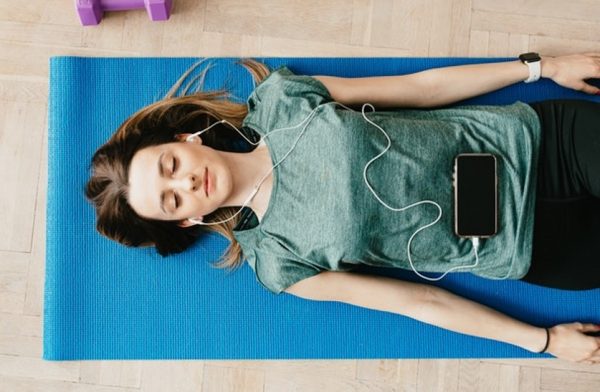
Manage your stress with Progressive Muscle Relaxation
Stress, fear and anxiety for many of us results in muscle tension. Muscle tension is response of body to prepare for situations. Whether the situation is simple or complex, body’s response to stress is same. The degree of muscle tension might vary. When we are tensed or muscle experiencing tension, we also tend to have body aches, headaches, backache etc.
To reduce muscle tension there is a solution and it is known as Progressive Muscle Relaxation or PMR. Yogis practice PMR before getting into meditation status or shavasana. In PMR exercise one will tense up muscles of body followed by relaxation.
Practicing PMR everyday helps when we are undergoing stress, anxiety, anger or fear to face situation and calms body and mind.
The pain that we feel due to our emotions also will reduce overtime by practicing PMR.
Practicing PMR before going to sleep, helps to get good sleep.
When you have pain due to stress and anxiety, practicing PMR on that muscle group or area could help you to get rid of the pain.
How to practice Progressive muscle relaxation?
When you are ready to practice PMR on certain time, select a place for relaxation.
- Slowdown breathing and prepare your mind to relax without any disturbance.
- When you are ready (best is lying down on mat in Shavasana or corpse pose), breath in and then tense the muscle group one by one in sequence (given below). While doing so, you should feel the tension in targeted muscles. Do not tense muscle so much that you get pain.
- Keep tension in muscles for about five seconds.
- After five seconds, say relax and, breath out, relax the muscle and again tense the muscle for 10 more seconds. After ten seconds say “relax” and then move on to next set of muscle.
- After finishing PMR on all body muscles, be in the pose for few minutes and count 10 to 1 to bring back your focus to present. Now notice any change, observe how your muscles feel when tensed and when they are relaxed. If your body as well as mind feels relaxed, then you know that PMR is working.
If you feel that you need few more mins of PMR, then continue muscle relaxation technique for additional five seconds on each muscle group.
How to tense the muscle group?
To remember muscle groups sequence, you can record sequence and play audio till you get to know the muscle group sequence.
Each muscle group needs certain tension ‘action” in order to get into PMR. Below are instructions that explains how to progressively tense and relax each muscle group in your PMR practice.
- Right Hand – Clench upper arm, forearm and make a fist with palm
- Right wrist and forearm- Make a fist with your right hand. Bring your right forearm up to your shoulder to “flex muscle’
- Left arm – Clench upper arm, forearm and make a fist with palm
- Left wrist and forearm- Make a fist with your right hand. Bring your right forearm up to your shoulder to “flex muscle’
- Shoulders – Shrug both shoulders towards ears
- Around eyes and nose bridge- Close both eyes tightly and bridge of nose feel tensed too
- Mouth, Jaws and cheeks – Open mouth as wide as if you are yawning or giving wide smile
- Lips – Press lips tightly inwards
- For muscles front of neck –Press back of head on the floor or chair. Another way is move face slightly forward and then pull your head back slowly, as you are looking up to the ceiling. You will feel stretch and tension in muscle.
- For muscles at back of neck – slowly bring chin towards chest.
- Chest muscles- Take a deep breath and hold it for 4 to 5 seconds.
- Shoulder blades and back- Push shoulder blades inwards so that they almost touch each other. While doing so your chest will push forward
- Stomach – Breathe deeply and hold stomach tight for five seconds
- Hips and buttocks- Squeeze buttock muscles
- Right upper leg- Lift muscle up and hold it tight
- Right lower leg- Lift muscle up while flexing feet towards you, pull toes towards you to feel the stretch
- Right fee – Curl toes downwards, away from you.
- Left leg- Repeat same actions as for right leg right foot.
Practicing PMR daily will help you to understand the muscles and how each muscle group responds to tension and how you should relax them. This will help you to respond differently for various kinds of stress and pain.
Image credit: Photo by Karolina Grabowska from Pexels (Free for commercial use)
Author: Sumana Rao | Posted on: November 11, 2020






















Write a comment